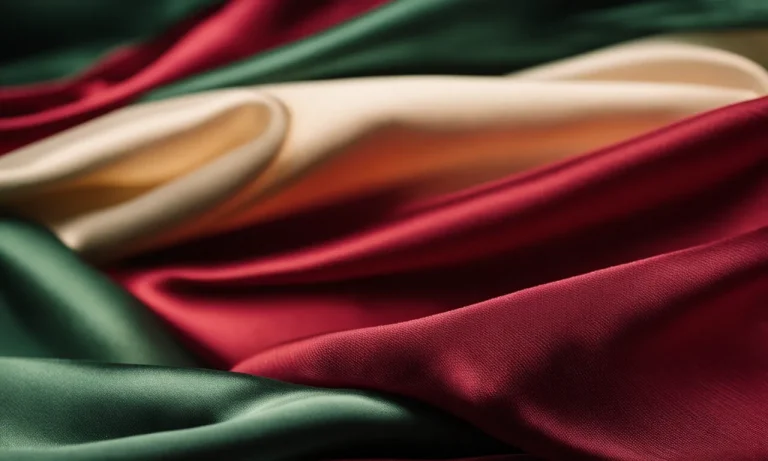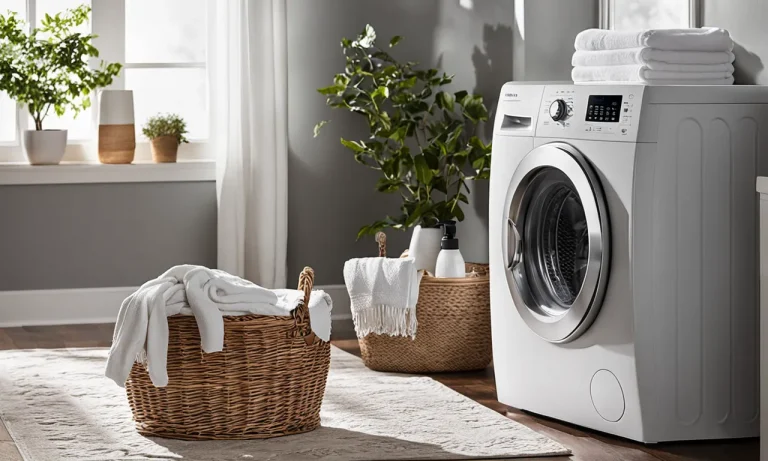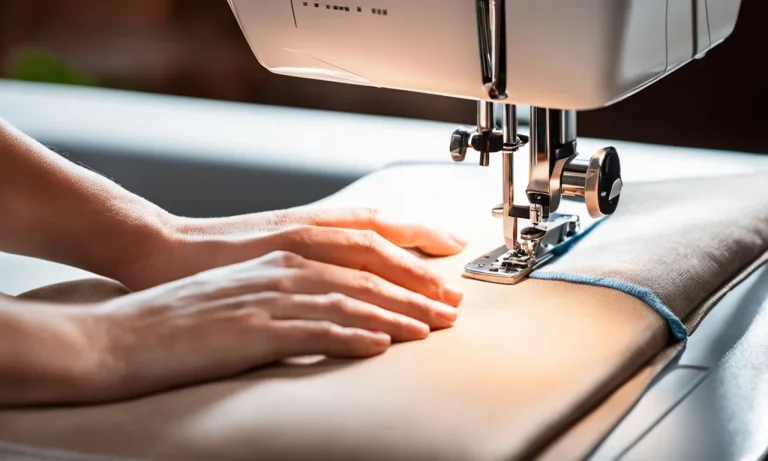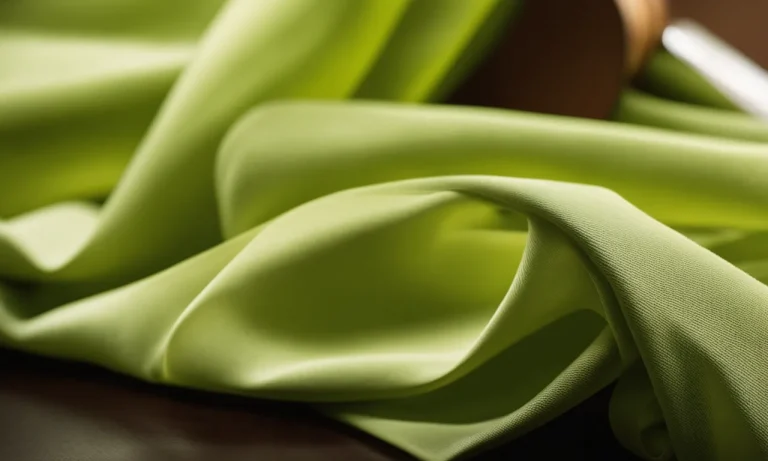How To Make Fabric Softener Without Vinegar
If you’ve run out of fabric softener and don’t have any vinegar on hand, don’t worry – you can still make your laundry soft and static-free with ingredients you likely already have in your pantry and bathroom.
In this comprehensive guide, we’ll walk through several simple, vinegar-free fabric softener recipes and tips for getting soft laundry every time.
If you’re short on time, here’s a quick answer to your question: you can make an effective DIY fabric softener without vinegar by mixing ingredients like hair conditioner, salt, baking soda, essential oils, and liquid Castile soap. Let’s dive into the details…
Why Use Fabric Softener?
Fabric softener is a popular laundry product that offers several benefits for your clothes. Whether you’re washing your favorite t-shirt or a delicate pair of socks, fabric softener can enhance the quality and appearance of your garments.
Here are a few reasons why using fabric softener is a great idea:
Reduces Static
One of the main benefits of using fabric softener is its ability to reduce static cling in your clothes. Static electricity can be a nuisance, causing your garments to stick together and cling to your body.
Fabric softener eliminates this problem by neutralizing the electric charges that cause static. This not only makes your clothes more comfortable to wear but also prevents them from clinging to your body.
Softens Fabrics
Another reason to use fabric softener is that it helps to soften your fabrics. After a wash, clothes can sometimes feel stiff and rough, especially when air-dried. Fabric softener works by coating the fibers of your clothing, making them feel smoother and more pleasant against your skin.
So, if you want your clothes to feel luxuriously soft and cozy, fabric softener is a must-have in your laundry routine.
Fresh Scent
Have you ever wondered how some clothes smell so fresh and clean even after sitting in your wardrobe for months? Fabric softener plays a significant role in leaving your clothes with a long-lasting, fresh scent.
It infuses your garments with a delightful fragrance that lingers throughout the day, giving you that extra boost of confidence. With a variety of scents available, you can choose one that suits your preference and turns your laundry into a delightful experience.
Now that you know why using fabric softener is beneficial, let’s dive into how you can make your own fabric softener without vinegar.
Fabric Softener Alternatives
Hair Conditioner
If you’re looking for a fabric softener alternative that will leave your clothes smelling fresh and feeling soft, look no further than your bathroom cabinet. Hair conditioner can be used as a substitute for traditional fabric softener.
Simply add a small amount of hair conditioner to the rinse cycle of your washing machine, and voila! Your clothes will come out feeling soft and smelling amazing. Just make sure to choose a hair conditioner that doesn’t leave a heavy residue on your clothes.
Salt
Believe it or not, salt can be a great alternative to vinegar when it comes to fabric softening. Add a tablespoon of salt to your laundry load during the rinse cycle, and watch as your clothes come out softer than ever.
The salt helps to relax the fibers in the fabric, reducing stiffness and improving the overall feel of your garments. Plus, it’s a natural and inexpensive option that won’t harm the environment.
Baking Soda
Baking soda is a versatile household ingredient that can be used for a variety of purposes, including fabric softening. Add half a cup of baking soda to your laundry load along with your regular detergent, and let it work its magic.
Baking soda helps to neutralize odors and soften the fabric, leaving your clothes feeling fresh and clean. It’s a great option for those with sensitive skin or allergies, as it is gentle and hypoallergenic.
Essential Oils
If you’re a fan of scented fabric softeners, but want to avoid using vinegar, essential oils are the perfect solution. Add a few drops of your favorite essential oil to a damp washcloth or dryer ball, and toss it in the dryer with your clothes.
As the clothes tumble, they will pick up the scent of the essential oil, leaving them smelling amazing. Lavender, eucalyptus, and citrus oils are popular choices for their fresh and uplifting aromas.
Liquid Castile Soap
Liquid castile soap is a gentle and natural alternative to traditional fabric softeners. Add a small amount of liquid castile soap to the rinse cycle of your washing machine, and let it work its magic.
The soap helps to soften the fabric and reduce static cling, leaving your clothes feeling soft and comfortable. Plus, liquid castile soap is biodegradable and eco-friendly, making it a great choice for those who are conscious of their environmental impact.
Recipes for Homemade Fabric Softeners
Conditioner Softener
One popular recipe for a homemade fabric softener involves using hair conditioner. Simply mix equal parts of hair conditioner and water in a container and stir until well combined. Then, add a few tablespoons of this mixture to your washing machine’s fabric softener dispenser during the rinse cycle.
The conditioner helps to soften the fabric and leave a pleasant scent behind. This method is particularly useful for those who enjoy experimenting with different scents, as there are countless hair conditioner options available on the market.
Salt Water Softener
If you’re looking for a natural alternative to commercial fabric softeners, you can try using salt water. Dissolve half a cup of salt in hot water and then add it to a large container filled with cold water. Stir the mixture until the salt is completely dissolved.
To use, pour a small amount of the salt water solution into your washing machine’s fabric softener dispenser. The salt helps to soften the fabric and reduce static cling. This method is not only cost-effective but also a great option for those with sensitive skin or allergies.
Baking Soda Softener
Baking soda is a versatile ingredient that can be used for various household purposes, including as a fabric softener. To make a baking soda softener, simply add half a cup of baking soda to your washing machine’s fabric softener dispenser during the rinse cycle.
Baking soda helps to neutralize odors, soften fabrics, and reduce static cling. This method is particularly beneficial for those dealing with stubborn odors or heavily soiled clothes.
Essential Oil Softener
If you want to add a personalized touch to your homemade fabric softener, consider using essential oils. Choose your favorite scent or combination of scents and add a few drops to a small amount of water.
Mix well and then add this mixture to your washing machine’s fabric softener dispenser during the rinse cycle. The essential oils not only provide a pleasant fragrance but also have added benefits such as antimicrobial properties or calming effects.
Be sure to do your research on essential oil safety and dilution ratios before using them in your fabric softener.
Liquid Soap Softener
Another simple recipe for a homemade fabric softener involves using liquid soap. Mix equal parts of liquid soap and water in a container and stir until well combined. Then, add a few tablespoons of this mixture to your washing machine’s fabric softener dispenser during the rinse cycle.
The liquid soap helps to soften the fabric and remove any residue or buildup. This method is especially useful for those who prefer a more natural and eco-friendly approach to laundry care.
Remember, when making your own fabric softeners, it’s important to consider your specific needs and preferences. Feel free to experiment with different recipes and adjust the ingredients as needed. Not only will you save money by making your own fabric softener, but you’ll also have the satisfaction of knowing exactly what ingredients are going into your laundry.
Tips for Using Fabric Softeners
Add During Rinse Cycle
When using fabric softeners, it is important to add them during the rinse cycle of your washing machine. This ensures that the fabric softener is properly distributed throughout the load of laundry and helps to soften the fibers of the fabric.
Adding fabric softener during the rinse cycle also helps to minimize any residue that may be left on the clothes.
Use Proper Amount
Using the proper amount of fabric softener is essential for achieving the desired results. Using too much fabric softener can leave a sticky residue on your clothes, while using too little may not provide the softness and freshness you desire.
Follow the manufacturer’s instructions on the fabric softener bottle to determine the appropriate amount to use for your load size.
Shake Before Using
Prior to using fabric softener, it is recommended to give the bottle a good shake. This helps to ensure that the fabric softener is well-mixed and that any ingredients that may have settled are evenly distributed.
By shaking the bottle, you can ensure that you are getting the maximum benefits from the fabric softener.
Store Properly
Proper storage of fabric softener is important to maintain its effectiveness. Make sure to store fabric softener in a cool, dry place away from direct sunlight. Exposure to heat and sunlight can degrade the quality of the fabric softener and reduce its performance.
Additionally, be sure to tightly seal the bottle after each use to prevent evaporation or spills.
For more information on fabric softeners and laundry tips, you can visit www.cleanipedia.com, a website dedicated to providing helpful cleaning and laundry advice.
Frequently Asked Questions
How long does homemade fabric softener last?
The shelf life of homemade fabric softener can vary depending on the ingredients used. However, on average, homemade fabric softener can last for up to six months when stored properly. It is recommended to store it in an airtight container in a cool, dry place to maintain its effectiveness.
If you notice any changes in the texture or smell of the fabric softener, it is best to discard it and make a fresh batch.
What can I use instead of fabric softener sheets?
If you’re looking for alternatives to fabric softener sheets, there are several options you can consider. One popular option is using wool dryer balls. These reusable balls help to soften fabrics and reduce static cling.
Additionally, you can try adding a cup of white vinegar to the rinse cycle or using baking soda as a natural fabric softener. These alternatives are not only effective but also environmentally friendly.
What are the benefits of homemade fabric softener?
Homemade fabric softener offers various benefits compared to store-bought options. Firstly, it allows you to have control over the ingredients used, making it suitable for individuals with sensitive skin or allergies.
Secondly, it is cost-effective, as the ingredients required for homemade fabric softener are often readily available and inexpensive. Lastly, making your own fabric softener is a greener option, as it reduces the use of harsh chemicals and plastic packaging that contribute to environmental pollution.
How much softener should I use per load?
The amount of fabric softener to use per load depends on the capacity of your washing machine and personal preference. As a general guideline, start with about half a cup of homemade fabric softener for a regular-sized load.
If you prefer a stronger scent or have larger loads, you can increase the amount slightly. However, be cautious not to overuse fabric softener, as it can leave a residue on your clothes.
Conclusion
With a few simple ingredients like conditioner, salt, baking soda, essential oils and Castile soap, you can easily whip up an effective homemade fabric softener without vinegar. Follow our recipes and tips to keep your laundry soft, static-free and lightly scented. Your clothes will thank you!







